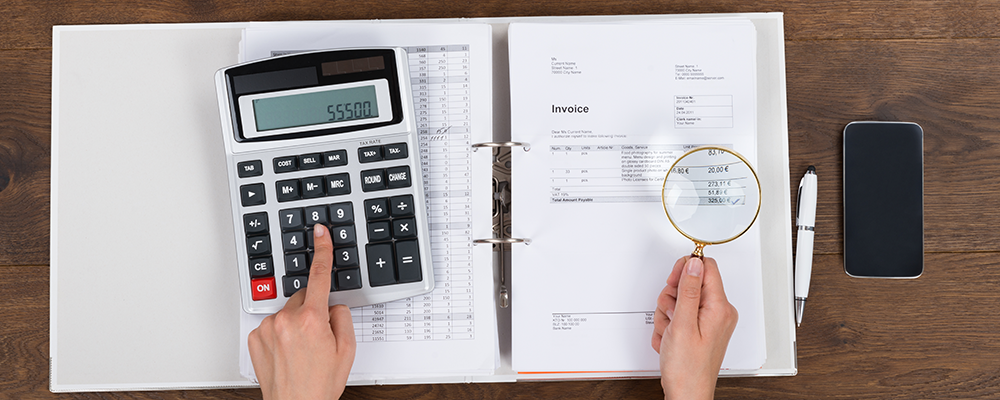From finding the right person for the job to drawing up a contract, there’s a lot to think about when you’re taking on employees for the first time. Of course, one of your biggest responsibilities as an employer will be paying your new staff.

This task comes with a lot of pressure. Your employees don’t want a delayed payday, and you don’t want to face the penalties that come with late or incorrect reporting.
To avoid problems like these, you’ll need to ensure your payroll system is set up in the right way.
Running payroll yourself vs using a provider
The first thing you’ll need to think about is how much of the task you want to take on yourself.
Payroll is becoming increasingly complex, with different categories of payments and deductions to consider, as well as the changes brought in by auto-enrolment.
Outsourcing these tasks to a payroll professional could be a helpful way to free up your time and resources.
Setting up payroll for the first time
If you’ve chosen to run payroll yourself, there are certain steps you’ll need to follow.
1) Register as an employer
If you haven’t done so already, you need to register with HMRC as an employer before you can employ staff and run payroll.
You’ll also need to set up a login for the PAYE Online service.
2) Choose payroll software
Payroll software will help you to record your employees’ details, work out their pay and report information to HMRC.
You should give some thought to the features you’ll need it to include, as this can vary across different software.
3) Collect and keep records
You’ll need to keep records of the following details about your employees:
- what you pay your employees and the deductions you make
- reports and payments you make to HMRC
- employee leave and sickness absences
- tax code notices
- taxable expenses or benefits
- payroll giving scheme documents.
You should keep this information for at least 3 years from the end of the tax year it relates to.
HMRC may need to check your records, so failing to keep them for long enough could put you at risk of a penalty.
4) Register your employees
For every employee you take on, you’ll need to get them set up on your own payroll system and registered with HMRC.
There are a number of other requirements to meet when you’re employing staff for the first time. Take a look at our previous blog to learn more.
You’ll also need to keep HMRC notified whenever a new employee joins, leaves or if their circumstances change.
5) Auto-enrol your employees
If you become an employer for the first time on or after 1 October 2017, you will have legal duties for automatically enrolling your staff into a workplace pension. These apply from the first day they start with you.
Auto-enrolment is a complex and time-consuming process if done manually. Find out more about how we can help.
6) Report and pay tax
Every month, you’ll need to complete a set of tasks to calculate, report and pay the right amount of tax to HMRC.
When you’ve recorded your employees’ pay in your payroll software, you can use it to calculate the tax and national insurance deductions you need to make.
You may need to make other deductions depending on the employee’s circumstances.
Key dates to remember are:
- 19th of the month for reporting reductions (such as statutory maternity pay)
- 22nd of the month to pay HMRC the tax you owe as reported the previous month.
Get in touch
We offer a confidential, cost-effective service that can take the stress of payroll off your hands.
Contact us or give us a call on 0161 336 2222 to talk about how we can help you, or find out more about our payroll service.

 © 2019 Warr & Co Chartered Accountants. Warr & Co Chartered Accountants is a member of The Institute of Chartered Accountants in England & Wales (ICAEW). Whilst the information detailed here is updated regularly to ensure it remains factually correct, it does not in any way constitute specific advice and no responsibility shall be accepted for any actions taken directly as a consequence of reading it. If you would like to discuss any of the points raised and / or engage our services in providing advice specific to your personal circumstances, please feel free to contact any one of the partners on 0161 477 6789 or contact us via our website forms. Warr & Co Chartered Accountants are registered to carry our audit work in the UK, our audit registration number is C002961684, for more information please visit www.auditregister.org.uk.
© 2019 Warr & Co Chartered Accountants. Warr & Co Chartered Accountants is a member of The Institute of Chartered Accountants in England & Wales (ICAEW). Whilst the information detailed here is updated regularly to ensure it remains factually correct, it does not in any way constitute specific advice and no responsibility shall be accepted for any actions taken directly as a consequence of reading it. If you would like to discuss any of the points raised and / or engage our services in providing advice specific to your personal circumstances, please feel free to contact any one of the partners on 0161 477 6789 or contact us via our website forms. Warr & Co Chartered Accountants are registered to carry our audit work in the UK, our audit registration number is C002961684, for more information please visit www.auditregister.org.uk.